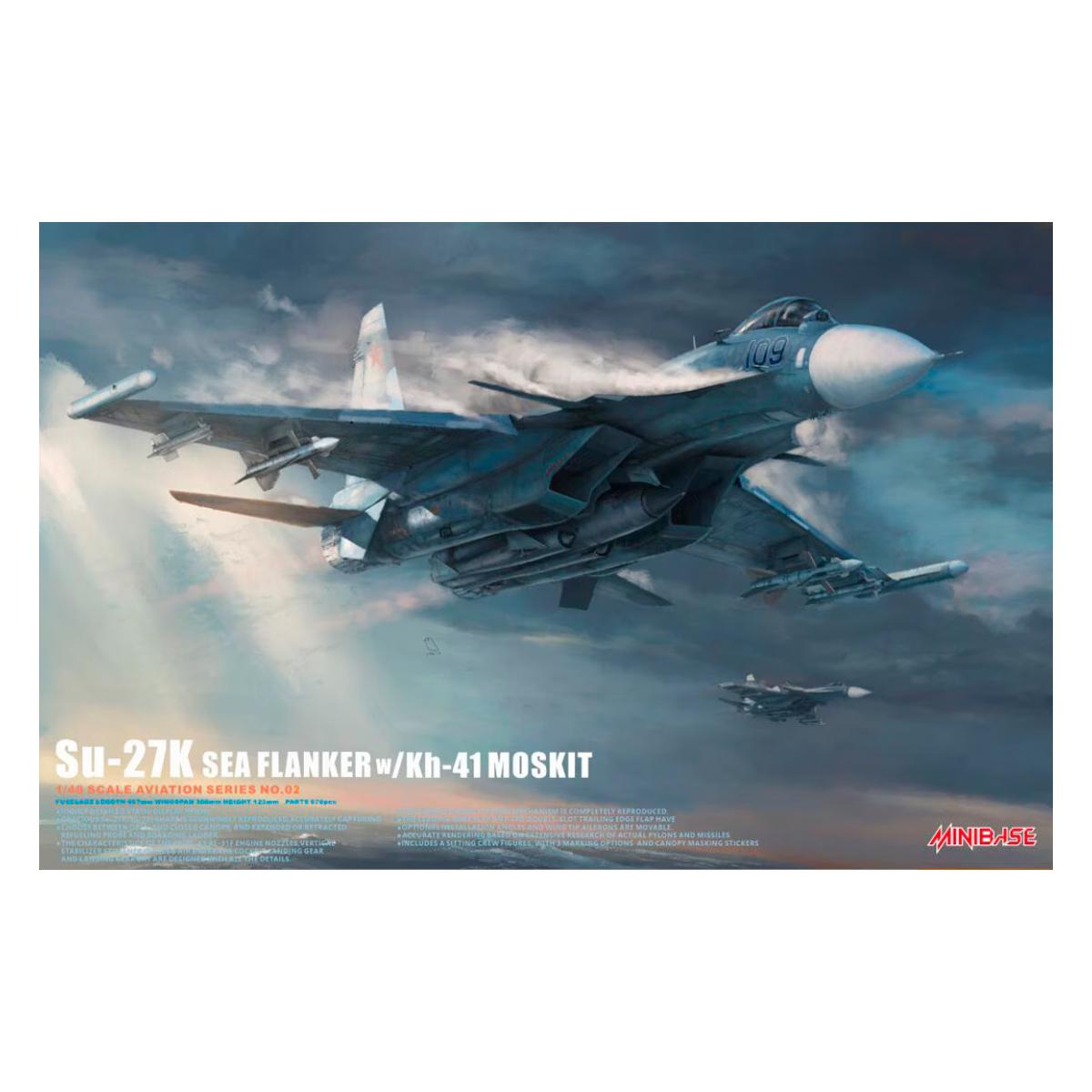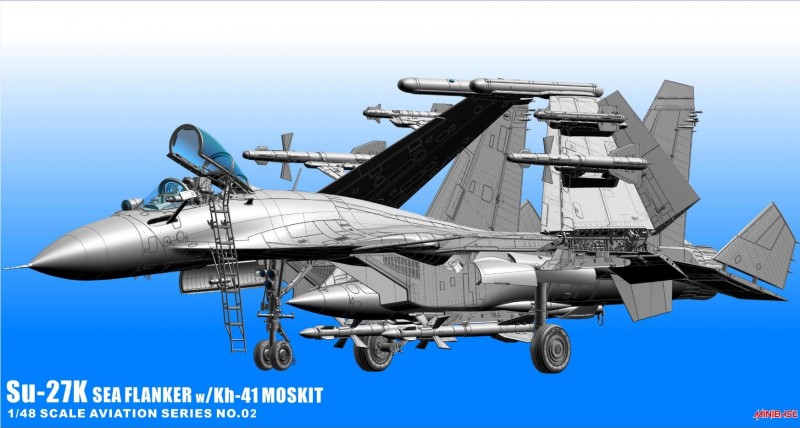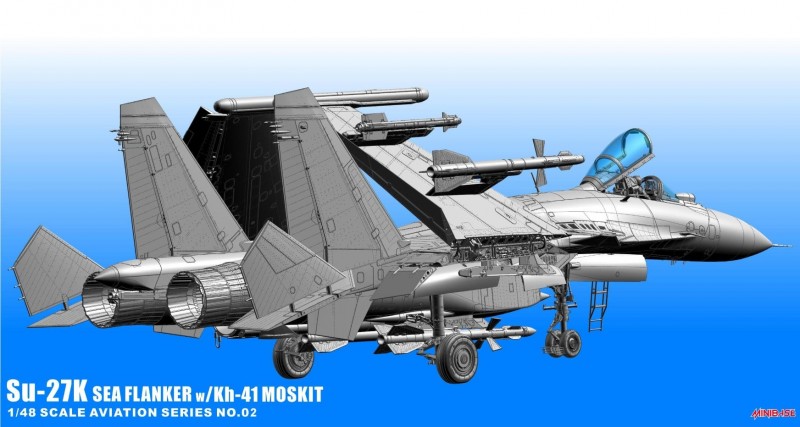1/48 Su-27K SEA FLANKER w/Kh-41 MOSKIT
69,95€
In stock

*Please check our Privacy Policies to see how to we use your personal data.
*Por favor revisa nuestra Política de Privacidad para ver como tratamos tus datos personales
The Su-27 (NATO classification: Flanker) is a multi-role, super-maneuverable 4th generation Russian fighter jet developed during the Soviet era to directly oppose American 4th generation heavy fighters. It was developed in the Russian company OKB Sukhoi by the designers N. S. Chernyakov, M. P. Simonov, A. A. Kolchin and A. I. Knishev. The first flight of the prototype was in 1977, and in 1984, the aircraft began to enter service. Today, this aircraft is one of the main fighters of the Russian Air Force, and its modifications are in service in India, China and a number of other countries. On the basis of this aircraft, many modifications of the 4th and 4 ++ generations with different purposes have been developed.
Su-27K is carrier-based single-seater with folding wings, high-lift devices, and arresting gear, built in small numbers. They followed the “T10K” prototypes and demonstrators.
- Detailed exterior parts
- Clear parts
- Decals
- Photo-etched parts
- Detailed weapons
- Assembly instructions
El Su-27 (clasificación OTAN: Flanker) es un caza ruso de 4ª generación, polivalente y supermaniobrable, desarrollado durante la era soviética para oponerse directamente a los cazas pesados estadounidenses de 4ª generación. Fue desarrollado en la empresa rusa OKB Sukhoi por los diseñadores N. S. Chernyakov, M. P. Simonov, A. A. Kolchin y A. I. Knishev. El primer vuelo del prototipo tuvo lugar en 1977, y en 1984 el avión comenzó a entrar en servicio. Hoy en día, este avión es uno de los principales cazas de las Fuerzas Aéreas rusas, y sus modificaciones están en servicio en India, China y otros países. Sobre la base de este avión, se han desarrollado muchas modificaciones de la 4ª y 4ª generaciones con diferentes propósitos.
El Su-27K es un monoplaza basado en portaaviones con alas plegables, dispositivos de gran elevación y tren de aterrizaje, construido en pequeñas cantidades. Siguieron a los prototipos y demostradores «T10K».
- Partes exteriores detalladadas
- Piezas transparentes
- Calcas.
- Fotograbados
- Armas detalladas
- Instrucciones de montaje






